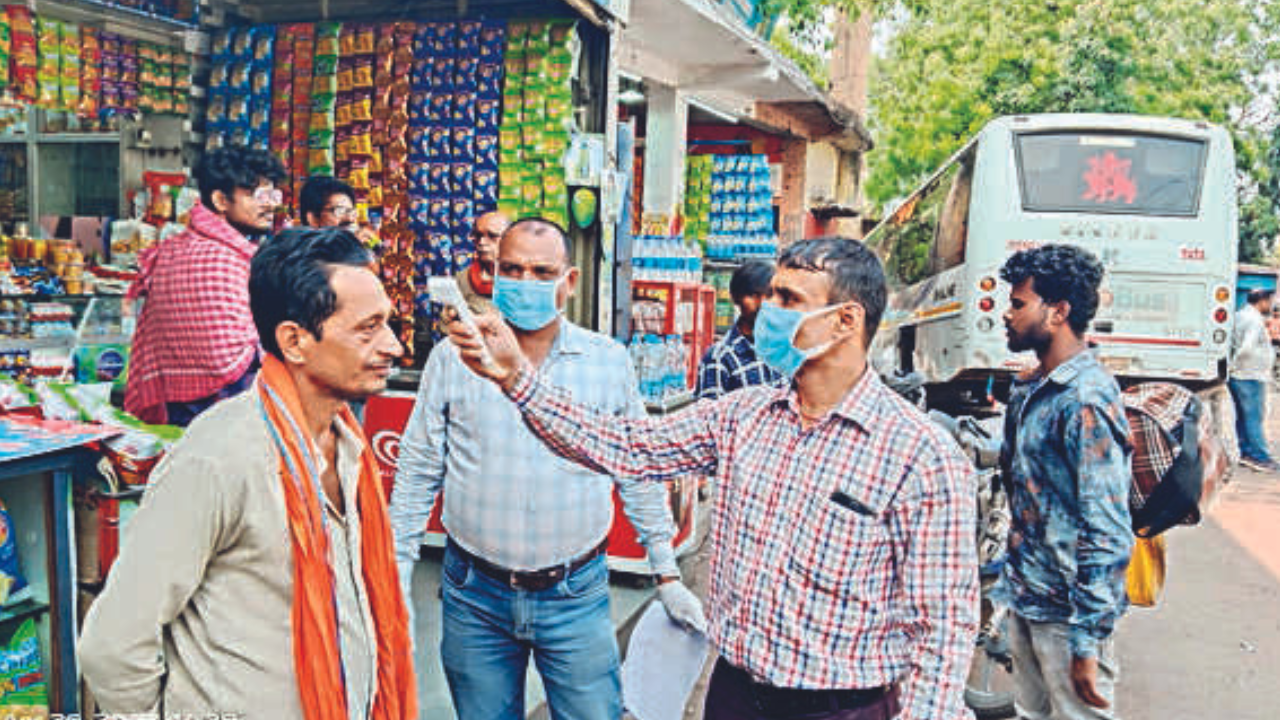
LONDON: The risk of long Covid is strongly associated with area-level deprivation, with the odds of having long Covid 46 per cent higher for people from the most deprived areas, compared to those in the least deprived areas, according to a study.
Published in the Journal of the Royal Society of Medicine, the study analysed over 2,00,000 working-age adults and is the first to quantify the association between long Covid and socioeconomic status across a range of occupation sectors.
Analysing data from the UK Office for National Statistics Covid-19 Infection Survey, the researchers found that females had a higher risk of long Covid, with the risk of long Covid in females in the least deprived areas comparable to that in males in the most deprived areas.
People living in the most deprived areas and working in the healthcare and education sectors had the highest risk of long Covid compared to the least deprived areas.
However, the study did not describe any significant association between the risk of long Covid and the most and least deprived areas for people working in the manufacturing and construction sectors.
“Although certain occupational groups, especially frontline and essential workers, have been unequally affected by the Covid-19 pandemic, studies on long Covid and occupation are sparse,” said lead researcher Dr Nazrul Islam, of the Faculty of Medicine at the University of Southampton.
“Our findings are consistent with pre-pandemic research on other health conditions, suggesting that workers with lower socioeconomic status have poorer health outcomes and higher premature mortality than those with higher socioeconomic position but a similar occupation. However, the socioeconomic inequality may vary considerably by occupation groups,” added Dr Islam, who is also part of Nuffield Department of Population Health at the University of Oxford.
According to the researchers, the study indicates the need for a diverse range of public health interventions after recovery from Covid-19 across multiple intersecting social dimensions.
Future health policy recommendations, they say, should incorporate the multiple dimensions of inequality, such as sex, deprivation and occupation when considering the treatment and management of long Covid.
“The inequalities shown in this study show that such an approach can provide more precise identification of risks and be relevant to other diseases and beyond the pandemic,” Dr Islam said.
“These findings will help inform health policy in identifying the most vulnerable sub-groups of populations so that more focused efforts are given, and proportional allocation of resources are implemented, to facilitate the reduction of health inequalities,” he noted.
Published in the Journal of the Royal Society of Medicine, the study analysed over 2,00,000 working-age adults and is the first to quantify the association between long Covid and socioeconomic status across a range of occupation sectors.
Analysing data from the UK Office for National Statistics Covid-19 Infection Survey, the researchers found that females had a higher risk of long Covid, with the risk of long Covid in females in the least deprived areas comparable to that in males in the most deprived areas.
People living in the most deprived areas and working in the healthcare and education sectors had the highest risk of long Covid compared to the least deprived areas.
However, the study did not describe any significant association between the risk of long Covid and the most and least deprived areas for people working in the manufacturing and construction sectors.
“Although certain occupational groups, especially frontline and essential workers, have been unequally affected by the Covid-19 pandemic, studies on long Covid and occupation are sparse,” said lead researcher Dr Nazrul Islam, of the Faculty of Medicine at the University of Southampton.
“Our findings are consistent with pre-pandemic research on other health conditions, suggesting that workers with lower socioeconomic status have poorer health outcomes and higher premature mortality than those with higher socioeconomic position but a similar occupation. However, the socioeconomic inequality may vary considerably by occupation groups,” added Dr Islam, who is also part of Nuffield Department of Population Health at the University of Oxford.
According to the researchers, the study indicates the need for a diverse range of public health interventions after recovery from Covid-19 across multiple intersecting social dimensions.
Future health policy recommendations, they say, should incorporate the multiple dimensions of inequality, such as sex, deprivation and occupation when considering the treatment and management of long Covid.
“The inequalities shown in this study show that such an approach can provide more precise identification of risks and be relevant to other diseases and beyond the pandemic,” Dr Islam said.
“These findings will help inform health policy in identifying the most vulnerable sub-groups of populations so that more focused efforts are given, and proportional allocation of resources are implemented, to facilitate the reduction of health inequalities,” he noted.
